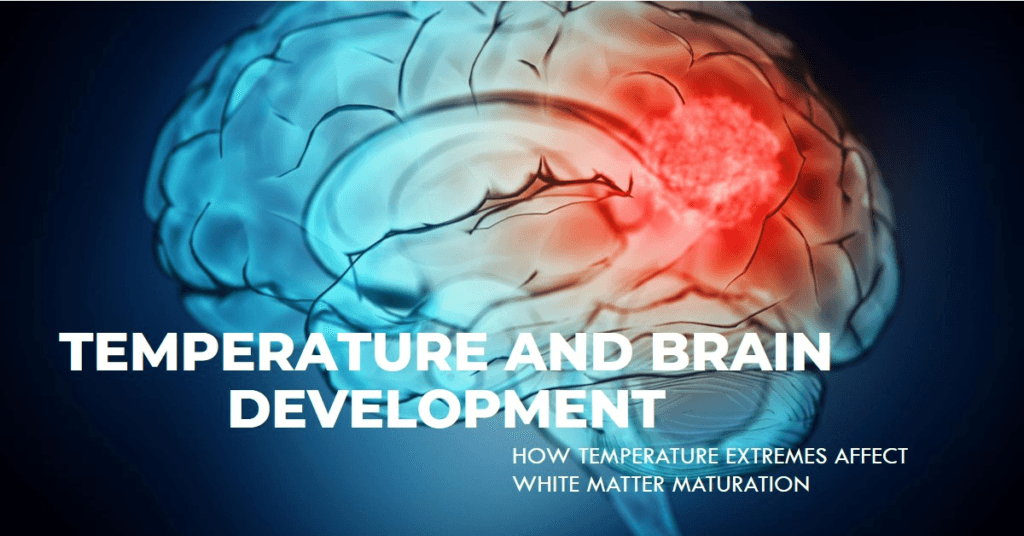A recent study published in Nature Climate Change sheds light on a potential link between early life temperature exposure and brain development. The research suggests that both hot and cold extremes during pregnancy and early childhood may be associated with alterations in the brain’s white matter microstructure.
White Matter: The Brain’s Communication Network

White matter plays a critical role in brain function, serving as the communication superhighways connecting different brain regions. During early development, white matter undergoes myelination, a process where a fatty sheath forms around nerve fibers, facilitating faster and more efficient information transmission.
This study investigated the potential influence of temperature extremes on this crucial developmental stage. Researchers analyzed brain scans of over 2,000 preadolescent participants, employing a metric called “mean diffusivity” to assess white matter organization. Lower mean diffusivity signifies a more mature and organized white matter structure.
The Temperature-Maturation Connection

The study’s findings revealed a correlation between exposure to temperature extremes and white matter properties. Specifically, colder-than-usual temperatures during pregnancy and the first year of life, coupled with hotter-than-usual environments from birth to 3 years old,
were associated with higher mean diffusivity in the preadolescent brain scans. This suggests a potential delay in white matter maturation for children experiencing these temperature variations.
Significance and Future Directions

While the long-term implications of these findings require further investigation, they highlight the potential vulnerability of fetuses and young children to extreme temperatures. Their bodies, particularly their temperature regulation mechanisms, are still under development, making them more susceptible to environmental fluctuations.
Interestingly, the study also identified a potential social disparity. Children from disadvantaged neighborhoods appeared to be more susceptible to the temperature effects on white matter development. This points towards a potential climate justice issue, where access to temperature-controlled environments might become even more crucial for ensuring equitable health outcomes.
This research serves as a springboard for further investigation into the underlying mechanisms by which temperature extremes influence brain development. It underscores the importance of maintaining comfortable temperatures for pregnant women and young children. Strategies such as appropriate clothing, proper ventilation, and potentially considering climate-controlled environments during extreme weather events, could be beneficial.
As climate change continues to reshape our world, this study offers valuable insights into potential health impacts, particularly for vulnerable populations. By implementing climate-resilient strategies and ensuring access to temperature-controlled spaces, we can work towards safeguarding the health and well-being of future generations.
#epicinfinite #epicarticle #epicblog
What do you think about this study? Leave a comment below!










